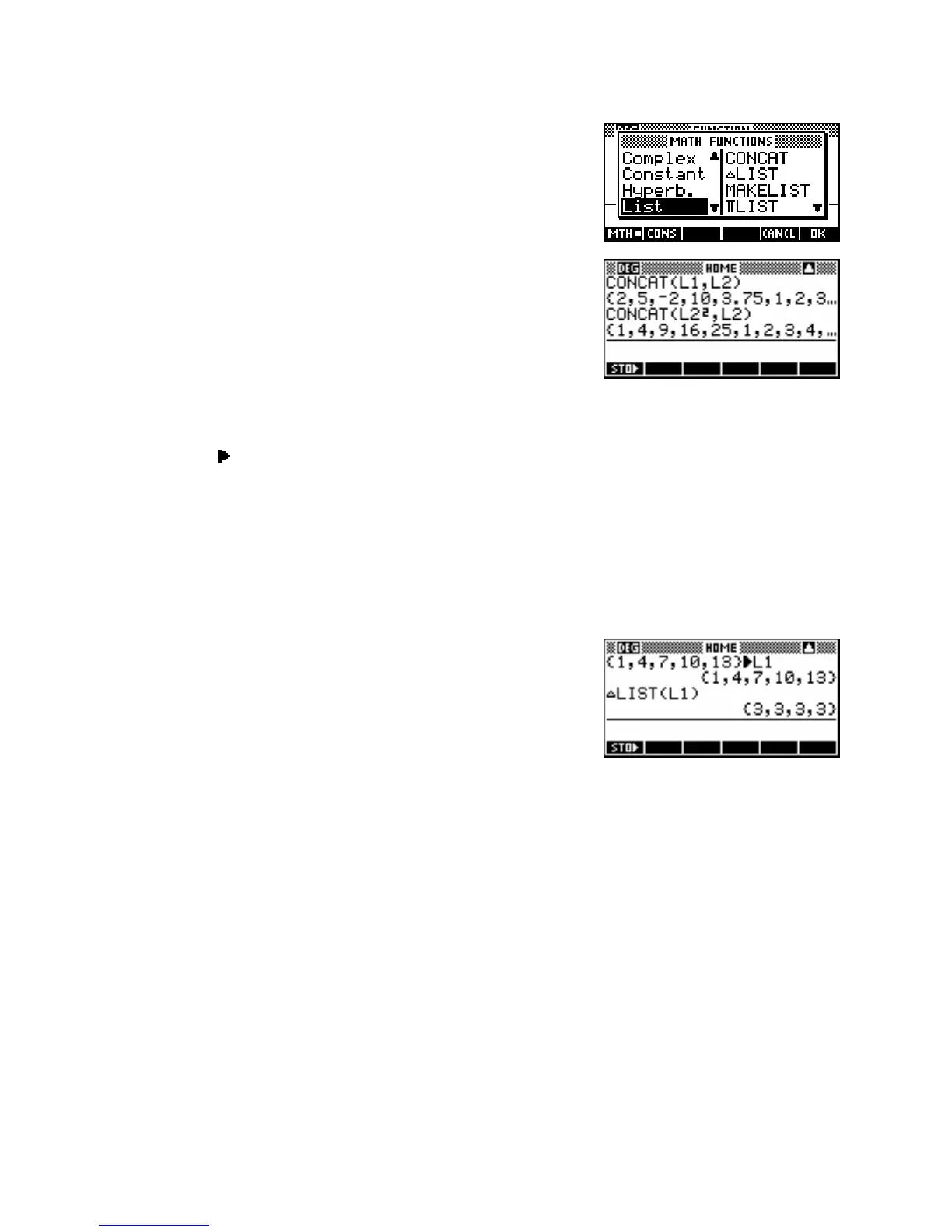T
T
h
h
e
e
‘
‘
L
L
i
i
s
s
t
t
’
’
g
g
r
r
o
o
u
u
p
p
o
o
f
f
f
f
u
u
n
n
c
c
t
t
i
i
o
o
n
n
s
s
CONCAT(<
list1>, <list2>)
This function concatenates two lists - appending one on to the end of the
other in the order that you specify. Lists must be enclosed in curly
brackets unless list variables are used.
Eg. L1={2,5,-2,10,3.75}
L2={1,2,3,4,5}
CONCAT(L1,L2) = {2,5,-2,10,3.75,1,2,3,4,5}
CONCAT(L1,{5}) L1 would add another element of value 5 onto the end of list L1, storing the resulting
longer list back into
L1.
∆
LIST(<list>)
This function produces a list which contains the differences between successive values in the supplied list. The
resulting list has a length one less than the original.
Eg. L1={1,4,7,10,13}
∆LIST(L1)={3,3,3,3}
MAKELIST(<expression>,<var_name>,<num>,<num>,<num>)
This function produces a list of the length specified using a rule of your choice. It is very useful, not only in
programming but in statistical simulations and modeling.
The syntax is:
MAKELIST(expression, variable name, start, end, increment)
where expression is the mathematical rule used to generate the numbers.
variable name is the variable that is to be used in the expression (any other
letters will be taken constants).
start is the first value that variable name is be given.
end is the largest value that variable name is to take.
and increment is the amount that variable name should be incremented by.
Examples are shown on the following page.
190

